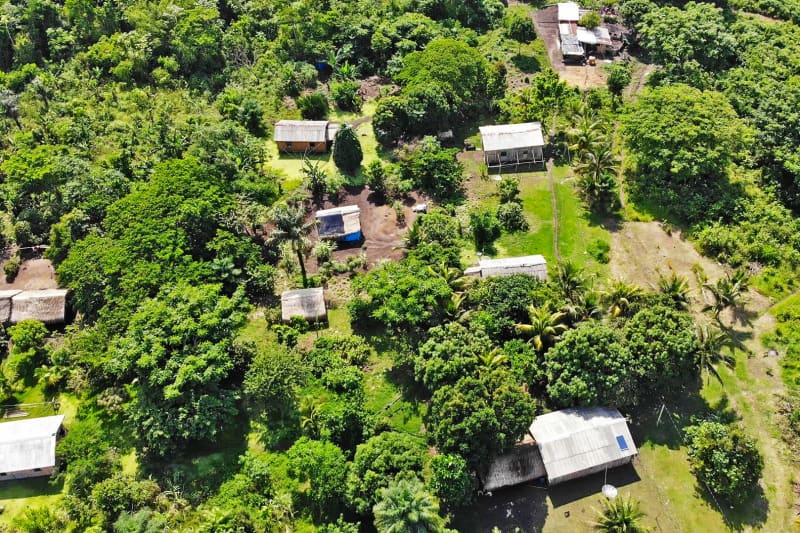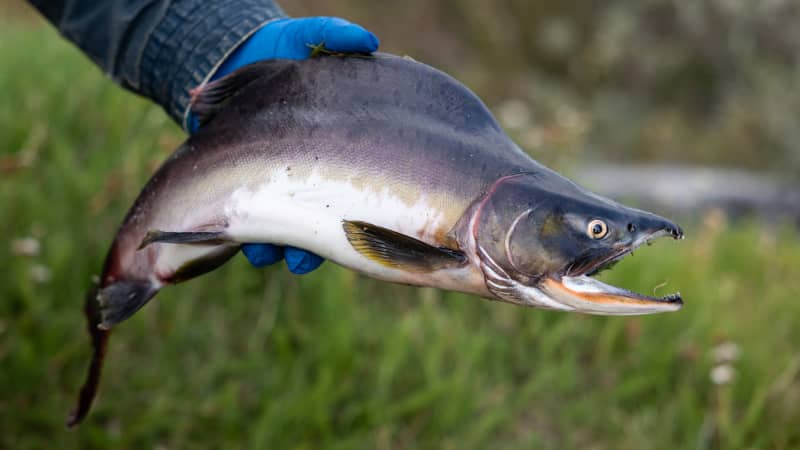
So far, many of the priorities of indigenous peoples are included in the UNFCCC text, but many countries are still searching for their policy on indigenous peoples.
Indigenous peoples account for 5% of the world’s population and 5% of the world’s biodiversity lives in areas inhabited by indigenous peoples.
Although it is impossible to classify different indigenous cultures into a strict category, the preservation of diversity is a sign of peoples’ respect for nature.
At the UNFCCC, indigenous peoples’ representatives have the right to speak and, with the support of states, can propose amendments to the text. However, they do not enjoy any real decision-making rights.
At the moment, the idea is not being implemented in the UN, although according to Holmberg, indigenous peoples have a stronger foothold in issues related to biodiversity than, for example, in climate negotiations.
At the level of speeches, the value of indigenous peoples has been recognized at the meeting. So far, many of the indigenous people’s priorities are included in the text – still placed in square brackets, which means that the parties have not reached an agreement on the issues.
– Many member countries are still trying to find their way around indigenous peoples. It’s a little early to say where this will end. The work is still in progress, Holmberg estimates after a week of negotiations.
“More than 30% of the world is already protected”
The 30/30 conservation goal has become the most important theme of the Montreal nature meeting, which is hoped to match the 1.5 degree goal of the Paris Agreement.
The goal means that 30 percent of both the land and sea surface of our planet would be protected by 2030. The goal is purely numerical and does not consider the qualitative dimensions of protection.
Many indigenous peoples have a negative attitude towards nature reserves. For example, Canada, which is hosting the meeting, has evicted indigenous peoples from the path of its national park projects throughout its history, and there are other similar examples. The establishment of protected areas has often made it difficult for the traditional way of life of the indigenous peoples.
– People don’t want an official nature park or similar because of this fear, Holmberg says.
According to Holmberg, the indigenous peoples want to bring a new approach to the negotiations: to accept the lifestyles of the indigenous peoples as part of nature conservation.

In 2021, the ICCA Consortium group, which promotes indigenous-led conservation, published a report, according to which more than 30 percent of the world’s surface area would already be protected if the areas inhabited by indigenous communities were included in the calculations.
According to Holmberg, it has been strongly proven that the indigenous peoples’ traditional use of nature is a way to protect nature, and many researchers have emphasized the local special expertise of the peoples in nature conservation.
– Traditional ways of using nature are traditional because they are sustainable. In those areas where traditions have been maintained, the use of nature is in harmony with carrying capacity, says Holmberg.
Holmberg emphasizes the quality of conservation measures and respect for the rights of indigenous peoples.
The numerical goal needed in the Montreal Agreement does not in itself exclude the consideration of the qualitative dimensions of protection, if this aspect can be recorded in, for example, the indicators used to monitor the realization of protection.
Are indigenous peoples taken into account in Finnish nature conservation?
According to Holmberg, there are many different experiences with the question. Consideration of the Sámi as part of nature agreements is not only a matter for the Nordic countries, but also for the European Union, as the Sámi are the only officially recognized indigenous people in the EU region.
A large part of the Saami on the Finnish side is under some kind of protection: there are Natura 2000 areas, nature parks and national parks.
However, Holmberg criticizes the fact that the priorities of the Sami people are not sufficiently taken into account in conservation issues and describes management as coming from the top down.
– We mainly play the role of commentators in these various conservation measures.
Holmberg’s most familiar example of the contradictions of nature conservation work with Sámi culture is related to the conservation of Tenojoki salmon. The question is complex:
Atlantic salmon stocks in the river have weakened considerably, and in response Finland and Norway in 2012 banned recreational fishing and the use of standing gear in the main bed and tributaries of Tenojoki. The ban also continued last summer.
According to Holmberg, a complete ban on salmon fishing will put \”Teno’s farms in a stranglehold\”. Holmberg states that the salmon must be protected, but the price cannot be the nullification of the rights of the Sámi people.
– Nature conservation cannot be separated from rights. Traditional use and its importance for conservation and Sámi culture must be taken into account.

One possibility for opening the question can be thought of as killing two birds with one stone.
Controlling harmful alien species is an important part of maintaining biodiversity. It is feared that humpback salmon, which have multiplied rapidly, will spread infectious diseases and disturb the spawning gland of Atlantic salmon in Teno.
In the coming summer, the pacification of Atlantic salmon will be maintained, but fishing can be targeted at humpback salmon and its ever-growing populations can be controlled.
Humpback salmon can upset the Teno ecosystem in a very macabre way: the species lives only two years and the fish die after spawning in the rivers, where they rot.
If the populations continue to grow and hundreds of thousands of humpbacks rise in Teno in the coming years, the nutrients spreading from their rotting carcasses will begin to significantly eutrophicate the river.
